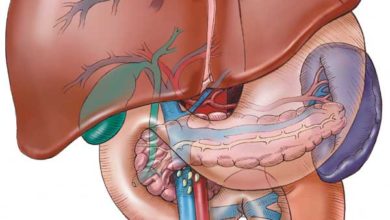Bright Eight Medical Updates-2012
مجلة نبض – أشجان المسعودي
We as health education section of this magazine aiming to keep all of our readers up to date about every topics related to medical world , regarding our aim we choose this article that focus the light toward the top topics in medical field in 2012 which may change the future of human being .This article published by Natural medicine web site
Neuroscience: Netting new autism genes
in April, four studies yielded a raft of new candidate genes for these neurological disorders .The four teamssequenced the coding regions of the genomes from almost 1,000 individuals with ‘sporadic’ autism as well as unafflicted members of their families. This process identified more than 100 spontaneously occurring mutations that might contribute to autism risk, although few genes were found that were mutated in more than one individual with the disease. These results suggest the genetics of autism are very heterogeneous and support models where many genes contribute to risk.
Intriguingly, two of the studies indicated that the de novo mutations contributing to autism were more likely to be inherited from the father of the affected child and were positively correlated with paternal age. Other paper published which revealed that older fathers transmit morede novo mutations to their offspring than younger fathers .
Cancer: Environmental issues
Evidence for how tumors use exosome secretion to make secondary organs more receptive to metastasis. Once cancer cells have reached pliant niches, they also actively counteract tissue-derived growth-restricting inputs through novel signaling components such as the BMP inhibitor Coco.
Metastatic cancer cells can also influence the immune and vascular cell components of their surroundings using paracrine signals. The study demonstrated that this cross-talk can protect tumor cells from the onslaught of antitumor therapy.
Even surrounding normal tissue might influence treatment response. A survey revealed that stroma-mediated therapy resistance is a common phenomenon and that proteins secreted into the local microenvironment can make tumors insensitive to targeted therapies . In a parallel study, uncovered how the damage to normal tissue by chemotherapy can prompt healthy cells to secrete proteins that promote the regrowth of tumor cells .
Aging: Calorie-cutting challenge
A report published in 2009 found that Modifying the diet of laboratory animals by sharply reducing their caloric intake has beneficial effects in many types of aging-related disease models and increases lifespan. But in a new study found that calorie-restricted diet at either young or old ages did not live longer than their control counterparts . Although the case is not yet closed, the new work suggests that the health benefits of caloric restriction may not translate into a lengthened lifespan in humans.
Also this year, new research showed how the plant-derived compound resveratrol “is a compound produced naturally by several plants when under pathogens such as bacterial or fungal on skin of red grapes” might mimic the benefits of caloric restriction.
Metabolism: Beige is the rage
So-called ‘beige fat’—white fat that is induced to express high levels of uncoupling protein 1 (UCP1) and other functional markers of brown adipose tissue—burns energy instead of storing it. Scientists identified the novel hormone irisin, which can turn white fat cells ‘beige’. They also detailed that exercise results in increased production of the surface protein fibronectin type III which is cleaved to release irisin, accompanied by a decrease in body weight; additionally this caused an increase in the ‘beiging’ of the white fat.
This study adds irisin as a potential new therapeutic target to increase energy expenditure and, thus, combat obesity. But other factors were also identified this year. Researchers demonstrated that cardiac natriuretic peptides, which are released upon cold exposure, also induce beiging of white fat.
Immunotherapy: Co-receptor clampdown
A pair of papers made the inhibitory co-receptor PD-1 (programmed cell death protein 1) one of the darlings of the cancer immunotherapy field this year. PD-1 is found on T cells; when it binds the ligands PD-L1 and PD-L2, the subsequent signaling pathway dampens the function of effector T cells and promotes regulatory T cell activity.
Building on preclinical work and early clinical data, this year a team led by scientists found that PD-1–specific antibody; of 236 evaluable patients with non–small-cell lung cancer, melanoma or renal cancer, response rates ranged from 18% to 28%, depending on cancer type. In 42 of the patients, more than half of the individuals had tumors that tested positive for PD-L1, and, of these individuals, nine (36%) had an objective response to the treatment. In contrast, none of the patients with PD-L1–negative tumors had an objective response.
In a companion study, the researchers reported that of 207 patients with advanced cancer who received an anti-PDL1 antibody, 6–17% of evaluable patients experienced an objective response (either complete or partial). Interestingly, the anti-PD-1 antibody did not appear to produce a response in colorectal or prostate cancer, and the anti-PD-L1 antibody did not produce a response in patients with colorectal or pancreatic cancer. But even though the reason why only certain tumors and patients responded to the antibodies remains unknown.
Virology: Pushing the envelope
Despite many million of dollars poured toward the development of a reliable HIV vaccine, there remains a distance to go before reaching this goal. In 2009, the results of the RV144 vaccine trial showed modest yet encouraging evidence for efficacy, preventing the acquisition of HIV infection in roughly a third of those who received the shots. Why did the vaccine work in this subset of patients and not in others? Identifying the immune correlates of protection is crucial to develop more efficient vaccines, and a study published this year provided a tantalizing answer to this key question.
A team of researchers found that IgG antibodies against the variable V1 and V2 regions of the HIV envelope (Env) protein correlated with reduced risk of HIV infection in vaccinated subjects . This region of Env is important for HIV binding to the CD4 T cell receptor and chemokine receptors, and earlier studies had identified it as the binding site of neutralizing antibodies against the virus. Unexpectedly, the levels of Env-specific IgA antibodies showed the opposite correlation, raising the possibility that they may have mitigated the protective effect of the IgG antibodies.
A subsequent study added granularity to the analysis by examining the genomes of viruses isolated from patients who participated in the RV144 trial. This exercise led to the identification of two specific amino acids in the V2 region that were associated with protective vaccine-inducedimmune responses .
Gastroenterology: Friends, not foes
The commensal relationship between mammals and the microbes they harbor in the gut came to the fore this year, with several papers showing how disruption of the microbial composition of the gut might increase susceptibility to colitis. Researchers found that, in mice, a diet high in saturated fat can alter host bile acids and promote growth of the Gram-negative bacterium Bilophila wadsworthia in the intestine, leading to colitis.
Malnutrition can also trigger this condition, which is known as dysbiosis. Mice engineered to have a deficiency in angiotensin-converting enzyme 2 have disrupted intestinal uptake of the amino acid tryptophan and increased susceptibility to colitis and intestinal inflammation. Colitis is also seen in mice fed a protein-free diet, confirming the link between dietary influences and microbial composition. These microbial alterations induced by intestinal inflammation and colitis are linked to colorectal cancer in mice,
Dysbiosis can cause trouble beyond the intestines, worsening hepatic steatosis and obesity and increasing adiposity. Moreover, exposure to antibiotics early in life impairs the development of immune cells, including natural killer T cells and basophils, promoting allergic airway inflammation.
Reproduction: Germinating debate
Almost a decade ago, a group of scientists challenged the dogma that female mammals had a limited number of eggs—which were thought to be established at or before birth and not replenished—by providing evidence that germline stem cells can renew and sustain egg production in the juvenile and adult mouse ovary. A study published early this year has now offered data that these female germline stem cells, called oogonial stem cells (OSCs), are also found in young women. The discovery has important implications that could change the paradigm of female reproductive biology and fertilization strategies.
This rare population of germline stem cells was isolated from human ovarian tissue injected into human ovarian tissue and transplanted the tissue into mice. The oocytes derived from these OSCs were found in primordial follicles in the mouse ovary, indicating that the isolated human OSCs can form human primordial follicles . The excitement spurred by the findings was great, but it was tempered by a challenge to the methodology used by the authors to isolate OSCs .
Future research into the existence of OSCs in humans will address whether such cells could have true potential to generate healthy offspring through in vitro techniques and whether they could be stimulated to produce eggs in vivo.



